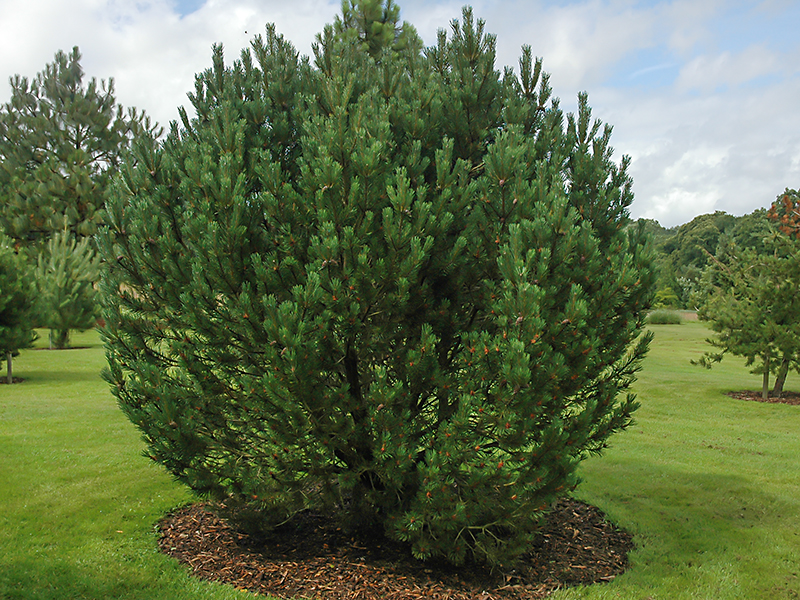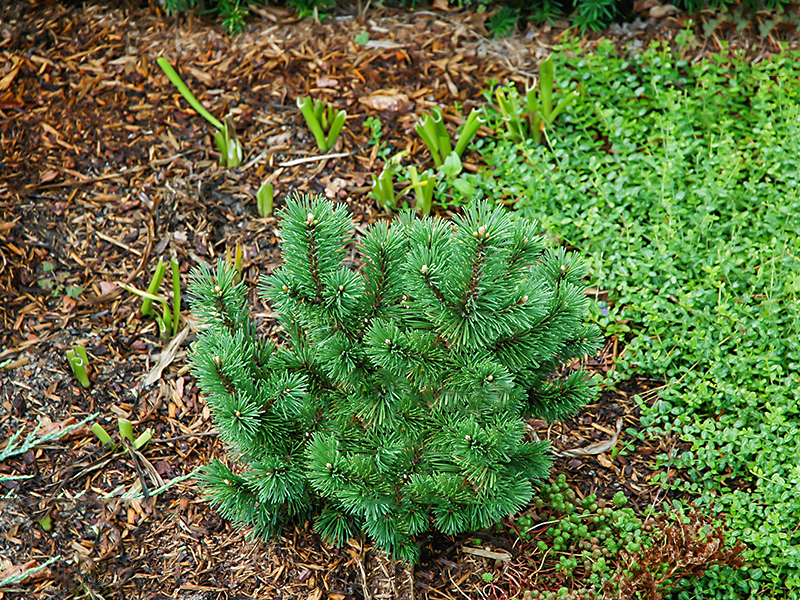
Woody > Pinus > Pinus mugo > Pinus mugo
Pinus mugo
Mugo Pine
Origin: Central and Southern Europe. Introduced into cultivation in 1779.
| Family |
| Pinaceae |
| Genus |
| Pinus |
| Species |
| mugo |
| Category |
| Woody |
| Type |
| Shrub (evergreen) |
| Pronunciation |
| USDA Hardiness Zone |
| 2 - 7 |
| Canadian Hardiness Zone |
| 0a - 6b |
| RHS Hardiness Zone |
| H5 - H7 |
| Temperature (°C) |
| -46 - (-15) |
| Temperature (°F) |
| -50 - (-5) |
| Height |
| 5 - 7 m |
| Spread |
| 8 - 10 m |
Photographs
Description and Growing Information
Flowering Period
| General Description |
| A shrub or small, round or broad pyramidal tree. The dark green, stiff needles are held on the tree for more than four years making this one of the more dense pines suitable for a screen planting. |
| Landscape |
| Mass and erosion control, required candling in smaller landscapes. |
| Cultivation |
| Prefers deep, moist soil in sun or partial shade. It can grow in basic or limestone rich soils. |
| Shape |
| Can be prostrate or pyramidal but is usually low, broad spreading, and bushy. |
| Growth |
| Slow |
| ID Characteristic |
| On smaller stems there are bumpy protuberances left from the abscised leaves. |
| Pests |
| Shoot tip moth and scale. |
| Habitat |
| Dry mountain slopes. |
| Bark/Stem Description |
| Dark grey, scaly and deeply furrowed. Also split into medium sized, irregular plates, but does not exfoliate on old trunks. |
| Flower/Leaf Bud Description |
| Oblong-ovoid buds, 0.6 -1.3 cm long, with reddish brown scales encrusted with resin. |
| Leaf Description |
| Needles are in pairs, rigid, curved, and medium to dark green, turning yellowish green in the winter. The needles are 5-7.6 cm long and persist for four or more years. |
| Flower Description |
| Monoecious, green-yellow coloured, inconspicuous and not showy. Flowering time peaks during March and April. |
| Fruit Description |
| The cones are subterminal, short-stalked, erect, and horizontal or slightly pendulous. They maybe solitary or 2-3 together and are 2.5-5 cm long by 0.6 to 2 cm broad, with flat or slightly concave scales. At maturity, they turn a greyish black. |
| Colour Description |
| Medium to dark green needles and brownish grey bark. Young stems are green, turning a blackish brown with age. |
| Texture Description |
| Medium textured. |
| Notable Specimens |
| The University of British Columbia, Victoria, British Columbia, Canada. |
| Propagation |
| Seed. |
-1.jpg)
-1.jpg)
-1.jpg)
-1.jpg)
-1.jpg)


